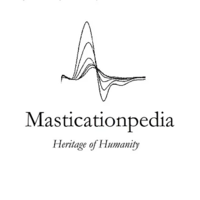Difference between revisions of "Buchindex"
| Line 39: | Line 39: | ||
**[[Verschlüsselter Code: Ephaptische Übertragung]] | **[[Verschlüsselter Code: Ephaptische Übertragung]] | ||
'''[[ | '''[[Bruxismus]]''' | ||
*[[2° | *[[2° Klinischer Fall: Kavernom der Zirbeldrüse]] | ||
**[[ | **[[Verschlüsselter Code: Übererregbarkeit des Trigeminussystems]] | ||
'''[[ | '''[[Okklusion und Haltung]]''' | ||
*[[3° | *[[3° Klinischer Fall: Meningiom]] | ||
**[[Encrypted code: Bilateral Motor Evoked Potentials of trigeminal root]] | **[[Encrypted code: Bilateral Motor Evoked Potentials of trigeminal root]] | ||
Revision as of 11:56, 9 March 2024
Buchindex
Normal Science
- Logik der medizinischen Sprache
- Komplexe Systeme
- Logik der medizinischen Sprache: Einführung in die quantenähnliche Wahrscheinlichkeit im Kausystem
- Schlussfolgerungen zum Status quo in der medizinischen Sprachlogik bezüglich des Kausystems
- 4° Clinical case: Temporomandibular disorders
- 5° Clinical case: Spontaneous Electromyographic Activity
Are we sure to know everything?
- 6° Clinical case: Facial onset sensory and motor neuronopathy
- 7° Clinical case: Brainstem neoplasm in Orofacial pain
- Conclusion of the ‘Normal Science’ section
Crisis of Paradigm
Research Diagnostic Criteria (RDC)
- Masticatory cycles
- Jaw opening width
- Speed of mandibular movement
- Complexity of chewing kinematics
Temporomandibular Joint
- Computerized Tomography of the TMJ
- Magnetic resonance imaging of the TMJ
Mandibular kinematic replicators
- Advantages and limits of Kinematic replicators
- Pantography
- Axiography
- Electrognatography
Transcutaneous Electric Nerve Stimulation
- Free way space before stimulation
- Free way space after stimulation
- Closing trajectory from TENS
Electromyography (EMG)
- EMG Interferential pattern
- EMG at rest position
- Quantitative analysis of the EMG
- Fourier transform
- Wavelett
Conclusions to the Paradigm crisis chapter
- Incompleteness in the 'Research Diagnostic Criteria'
- Need for a new paradigm
Extraordinary science
Masticatory Neurophysiology
- Center of masticatory pattern
- Mesencephalic mecchanism
- Trigeminal Motor nucleus
Sensory network
- Proprioceptive mechanisms
- Neuromuscular spindles
- Sensory mechanisms from the depressor muscles
- Golgi Tendon organs
- Role of impulses from the neck muscles
- Periodontal and oral Sensory Factor
- Pharyngeal sensory closure
- Sensory factors of the TMJ
Trigeminal System Connectivity
- Definition of the Fundamental Unit
- Structural and functional connectivity separation
- Understanding of 'Emergent Behaviour'
- Connectivity measurement
- Maximal Neural Energy Evoked
- Bilateral Trigeminal neuromotor organic symmetry
- Functional motor symmetry
- Normalization concept
- Organic vs Functional Symmetry
- Neuro Gnathological Functions paradigm
- New Clinical Index
